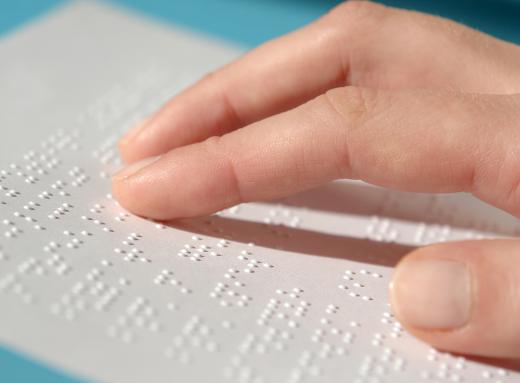What Is Adaptive Technology?
 Mary McMahon
Mary McMahon
The term “adaptive technology” can be used in reference to technology used by people with disabilities as well as to technology that adapts to meet the needs of users. Some technologies developed for disability purposes later have applications for other populations. Some examples of this kind of technology can include screenreaders and touchpads, as well as tools like predictive text and adaptive search algorithms.
In the case of technology for people with disabilities, adaptive technology accommodates a specific disability need. Not all people with disabilities need adaptations to use the Internet and various electronic devices, but some do, or they may find this technology useful. Software programs can be adaptive by allowing people to change text size, color, and position, for instance. Some people with disabilities may need minimalist themes for programs and websites to be able to navigate them without distractions.

Some of the most advanced adaptive technology focuses on the needs of blind Internet users and people who may not be able to operate keyboards and mice at high speed. Screenreading programs as well as Braille displays provide access for blind users who cannot see websites and computer programs. Tools like control boards, motion sensors, and styluses allow people to type and enter commands by moving their heads or using their feet. Voice command systems are also a form of adaptive technology.

For users who are not disabled, adaptive technologies shift to meet their needs to make a program fit and work better. Search engines use adaptive algorithms to learn from their users and return more relevant results, for instance. Intelligent programs and websites can remember settings and anticipate needs on the basis of user patterns. The same learning capabilities can also allow virtual reality systems to adapt to users who may move and work differently within the system.
Users may rely on adaptive technology like predictive text and autocorrection on a regular basis. Such features can allow for faster operation of computers, mobile phones, and tablets. These systems also learn from their users; in predictive text, for instance, the program will take note of the words the user most commonly pulls up, and will offer these first, with other options lower down in the menu. The more the user utilizes the feature, the smarter and more accurate it will get.
Researchers involved in adaptive technology may have degrees in computer science or a related topic. They can work on the programming behind applications and tools, as well as on physical equipment itself, such as displays to help people with low vision on the web. Many colleges and universities offer training and mentoring in this field.
AS FEATURED ON:
AS FEATURED ON:












Discuss this Article
Post your comments